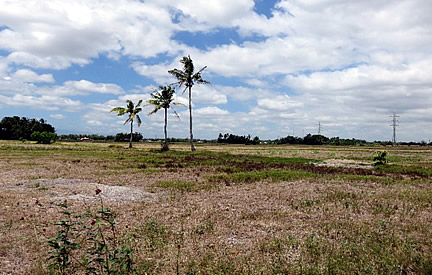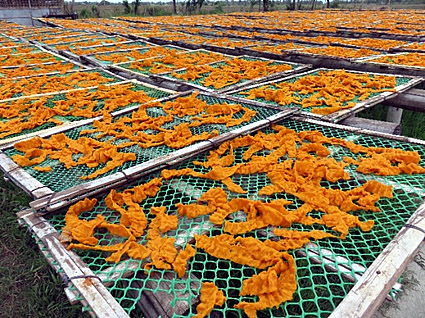
The reconnaissance survey, along with PRA, aimed to validate the suitability of the selected areas for data collection, and determine whether the statistics about these locations reflect the current situation in the municipality in terms of rice, corn, and/or coconut production. The survey, likewise, enabled the project team to trace the chain of activities for the said crops and their products, and find out whether there are unique enterprises for such commodities. Results of these scoping activities will serve as basis for the sampling design, selection of individuals or group of individuals, and areas for the case studies and household survey.
One common feature found in all of the municipalities visited, regardless of crop produced, is the presence of the market-credit tie-up between the farmers and their product outlets. The outlets are usually input providers or money lenders and traders. Although depending on the relationship between the farmers and their providers, some farmers are still able to sell their produce to other groups or individuals.
It was also noted that yellow corn can be described, to some extent, as “commercialized” because the market is already established for the produce. There are large buyers and processors of yellow corn like the Mindanao Grains in Malaybalay, Bukidnon. On the other hand, white corn was found to be produced at the subsistence level only. These observations lead to the question of where producers of chichacorn and the like get their raw products.

For coconut, although used as raw material for a number of value-added products, cooking oil is the usual form after processing. Farmers sell their harvested coconut either as whole nut or copra.
Finally for rice, the chain was found to be simple as it is only sold as milled rice after processing and as palay in its raw form. In Malasiqui, Pangasinan, farmers have the Rice Processing Complex (RPC) as another outlet for their palay besides the usual traders, agents, and sometimes, the National Food Authority (NFA). However, in Iloilo, El Niño and lack of irrigation facilities resulted to either crop failure or absence of second cropping. Its irrigation system is currently being rehabilitated by the National Irrigation Administration (NIA) due to the damage caused by Typhoon Frank.
Value-addition done for rice, corn and coconut were also determined. The most notable product from the crops concerned is the rice crackers made by a family business in Iloilo and sold to small stores in the capital. The project team noted that because of their reliance on solar drying, business expansions will be difficult unless investments will be made that allow drying with limited sunlight.
 The observations and results of the reconnaissance survey and PRA will be fully discussed in the first progress report that will be presented to DA-BAR by the SEARCA project team headed by Dr. Prudenciano U. Gordoncillo, Associate Professor of the Department of Agricultural and Applied Economics, University of the Philippines Los Baños. (Zeynna E. Balangue and Anieluz C. Pastolero)
The observations and results of the reconnaissance survey and PRA will be fully discussed in the first progress report that will be presented to DA-BAR by the SEARCA project team headed by Dr. Prudenciano U. Gordoncillo, Associate Professor of the Department of Agricultural and Applied Economics, University of the Philippines Los Baños. (Zeynna E. Balangue and Anieluz C. Pastolero)